Calcium hexaborate powder is a compound of calcium and boron, also known as calcium borate. It has high conductivity, hardness, chemical stability, and melting point, making it an important high-tech new material. The physical properties of calcium hexaborate powder are black-gray powder or particles with a melting point of 2230 ℃ and a relative density of 2.33g/cm ³, Insoluble in water at room temperature.
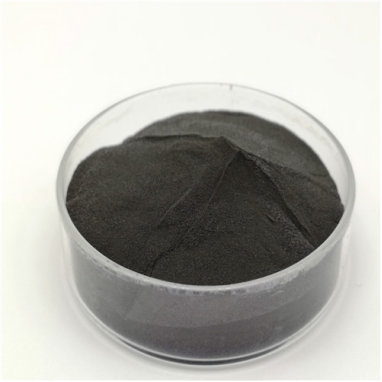
Calcium Hexaboride CaB6 Powder
Recently, the high-tech new material calcium hexaborate CaB6 powder has made breakthroughs in multiple application fields, attracting widespread attention from the industry. This black-gray powder is widely used in multiple high-tech fields due to its high conductivity, hardness, and chemical stability.
In the nuclear industry, calcium hexaborate powder, a new type of neutron-resistant material, provides strong guarantees for the safe operation of nuclear reactors. Its excellent anti-neutron radiation performance enables nuclear reactors to effectively prevent neutron leakage during operation, improving the safety and efficiency of nuclear energy utilization.
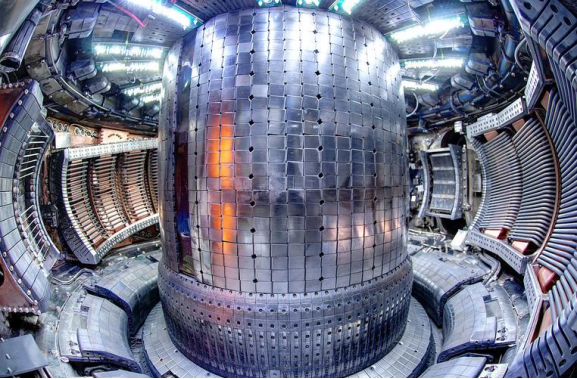
Application of calcium hexaborate powder nuclear reactor
In electronic components, calcium hexaborate powder is used as a new semiconductor material in spin electronic components with a population temperature of 900K. Its unique physical properties enable electronic components to maintain stable performance in high-temperature environments, opening new possibilities for the electronics industry's development.
In addition, calcium hexaborate powder has played an important role in the production of high-purity metal borides and boron alloys. These high-purity materials have broad application prospects in fields such as aerospace and new energy, providing strong support for the development of related industries.

Application of calcium hexaborate powder in the aerospace field
It is worth mentioning that the application of calcium hexaborate powder in the field of superconducting copper smelting has also achieved significant results. As a deoxygenation and sulfur extraction additive, calcium hexaborate powder can effectively improve the conductivity and strength of superconducting copper, opening up a new path for the research and application of superconducting materials.
With the continuous progress of technology and the expansion of application fields, the potential value and application prospects of calcium hexaborate powder will be even broader. In the future, we hope that this high-tech new material can demonstrate its unique advantages and value in more fields, and make greater contributions to promoting social and technological progress.
RBOSCHCO is a trusted global chemical material supplier & manufacturer with over 12 years experience in providing super high-quality chemicals and Nanomaterials. The company export to many countries, such as USA, Canada,Europe,UAE,SouthAfrica,Tanzania,Kenya,Egypt,Nigeria,Cameroon,Uganda,Turkey,Mexico,Azerbaijan,Belgium,Cyprus,Czech Republic, Brazil, Chile, Argentina, Dubai, Japan, Korea, Vietnam, Thailand, Malaysia, Indonesia, Australia,Germany, France, Italy, Portugal etc. As a leading nanotechnology development manufacturer, RBOSCHCO dominates the market. Our professional work team provides perfect solutions to help improve the efficiency of various industries, create value, and easily cope with various challenges. If you are looking for Calcium hexaborate powder, please send an email to: sales1@rboschco.com
Iron Oxide Fe3O4 Powde is a powder of ferric oxide. Iron trioxide, with the chemical formula Fe3O4 and the CAS number 1317-61-9, is a compound with magnetism and a relative molecular weight of 231.53. It is also an oxide of iron that can be magnetized.
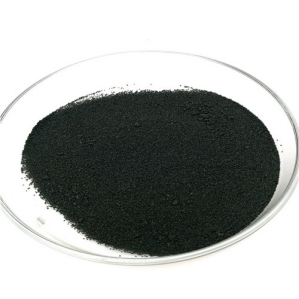
Iron trioxide powder has a certain degree of magnetism and can move directionally under an external magnetic field. When the particle size is within a certain range, it also exhibits superparamagnetism and can generate heat under the action of an external alternating electromagnetic field. This powder has stable chemical properties, so its use is quite extensive.
Application of ferric oxide powder in optimization of automotive brake systems: A well-known automotive manufacturing company announced that it has successfully applied ferric oxide powder in the development of new brake pads. This powder's excellent magnetism and wear resistance significantly improve brake pads' performance, enhance cars' braking effect, and extend their service life.
Green car manufacturing: Iron oxide powder helps with energy conservation and emission reduction. With the increasing awareness of environmental protection, the automotive manufacturing industry is also actively seeking green manufacturing solutions. Iron trioxide powder, as an environmentally friendly material, is used to manufacture automotive components such as engine components and transmission system components. Its efficient magnetic properties help to improve energy conversion efficiency, reduce energy consumption, and lower automotive emissions, meeting the requirements of green manufacturing.

Iron oxide powder assists in automobile lightweighting: As the trend of automobile lightweighting accelerates, the demand for high-performance materials continues to increase. Iron trioxide powder has shown great potential in the research and development of lightweight materials for automobiles. It can be used in combination with other materials to manufacture lighter and more durable automotive components, improving the overall performance and safety of the car.
Technological innovation: Application of ferric oxide powder in automotive electromagnetic technology: With the development of automotive intelligence and electrification, the application of electromagnetic technology in automotive manufacturing is becoming increasingly widespread. Iron trioxide powder, as an important magnetic material, is used to manufacture key components such as automotive electromagnetic sensors and motors, improving the intelligence level and performance stability of automobiles.

About RBOSCHCO
RBOSCHCO is a trusted global chemical material supplier & manufacturer with over 12 years experience in providing super high-quality chemicals and Nanomaterials. The company export to many countries, such as USA, Canada, Europe,UAE,SouthAfrica,Tanzania,Kenya,Egypt,Nigeria,Cameroon,Uganda,Turkey,Mexico,Azerbaijan,Belgium,Cyprus,Czech Republic, Brazil, Chile, Argentina, Dubai, Japan, Korea, Vietnam, Thailand, Malaysia, Indonesia, Australia,Germany, France, Italy, Portugal etc. As a leading nanotechnology development manufacturer, RBOSCHCO dominates the market. Our professional work team provides perfect solutions to help improve the efficiency of various industries, create value, and easily cope with various challenges. If you are looking for Iron Oxide Fe3O4 Powde, please send an email to: sales1@rboschco.com
SAES Synthesized Alcohol Ether Sulfate is a synthetic alcohol ether sulfate, also known as half-branched C12-15 alcohol polyoxyethylene ether sodium sulfate, synthetic alcohol AES, and unfrozen AES.
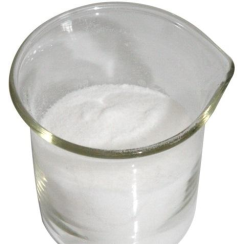
The application of SAES Synthesized Alcohol Ether Sulfate in the washing industry has always been of great concern. As a high-performance anionic and non-ionic surfactant, SAES plays an important role in the washing industry due to its excellent cleaning ability, mildness, and environmental characteristics.
In recent years, with consumers' increasing performance requirements for washing products, the application of SAES in the washing industry has also been further expanded. Multiple washing product manufacturers have incorporated SAES into their products to improve their cleaning effectiveness and user experience.
Some news reports indicate that the application of SAES in the washing industry is not limited to traditional products such as laundry detergent but has gradually expanded to the high-end washing market. For example, some high-end washing brands utilize the mildness and low irritation of SAES to launch washing products for special needs, such as baby clothing and sensitive skin, which consumers deeply love.

In addition, SAES's environmental characteristics also make it highly respected in the washing industry. With increasing global environmental awareness, more and more consumers are inclined to choose environmentally friendly and sustainable washing products. SAES, as a biodegradable surfactant, can effectively reduce its impact on the environment, in line with the green and environmentally friendly washing concept.
Efficient cleaning ability: SAES has excellent cleaning performance, which can effectively remove various stubborn stains. Whether it's oil, dust, or other difficult to clean dirt, SAES can easily deal with it, making clothes, fabrics, and more refreshed.
Mildness: Compared to traditional washing ingredients, SAES is milder and less irritating to clothing and skin. This makes it particularly suitable for occasions that require special care, such as baby clothing and sensitive skin, ensuring a safe and comfortable washing process.
Good foaming property: SAES can produce rich and delicate foam, which helps to penetrate clothing fibers better and thoroughly remove stains. At the same time, the delicate foam can also better protect clothes from wear and damage.

Strong stability: SAES can maintain stable performance under different water quality and temperature conditions, which enables it to play an excellent role in various washing environments. SAES can maintain its efficient cleaning effect in both hard and soft water areas.
Environmental sustainability: As a biodegradable surfactant, SAES is environmentally friendly and does not cause persistent pollution. This meets the demand of modern consumers for environmentally friendly and sustainable.
About RBOSCHCO
RBOSCHCO is a trusted global chemical material supplier & manufacturer with over 12 years experience in providing super high-quality chemicals and Nanomaterials. The company export to many countries, such as USA, Canada,Europe,UAE,South,Africa,Tanzania,Kenya,Egypt,Nigeria,Cameroon,Uganda,Turkey,Mexico,Azerbaijan,Belgium,Cyprus,Czech Republic, Brazil, Chile, Argentina, Dubai, Japan, Korea, Vietnam, Thailand, Malaysia, Indonesia, Australia,Germany, France, Italy, Portugal etc. As a leading nanotechnology development manufacturer, RBOSCHCO dominates the market. Our professional work team provides perfect solutions to help improve the efficiency of various industries, create value, and easily cope with various challenges. If you are looking for SAES Synthesized Alcohol Ether Sulfate, please send an email to: sales1@rboschco.com
Molybdenum disulfide powder is an inorganic compound composed of two chemical elements: molybdenum and sulfur. It is black-gray to black powder with a metallic luster and has a greasy touch but no odor. Its density is about 4.80g/cm ³, and The melting point is approximately 1185 ℃. The friction coefficient of molybdenum disulfide powder is between 0.05 and 0.09, and it has good chemical and thermal stability.It does not react chemically with general metal surfaces and does not corrode rubber materials.
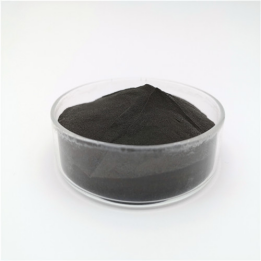
With the continuous development of industrial technology, the requirements for lubricating materials are also increasing. Recently, a powdered solid lubricant called molybdenum disulfide has attracted widespread attention in the industry due to its excellent performance and stability.
It is reported that molybdenum disulfide powder has excellent lubrication performance and can form a strong lubricating film on various friction surfaces, effectively reducing friction coefficient, wear, and energy consumption. Its unique high-temperature stability enables it to maintain good lubrication effects even in high-temperature and high-pressure working environments, providing strong guarantees for the long-term stable operation of industrial equipment.
In addition, molybdenum disulfide powder also has good corrosion resistance and dispersibility, which can resist the erosion of various chemicals. At the same time, it can be easily added to various oils and fats to form a stable colloidal state. This characteristic makes it widely applicable in various industrial fields, such as automotive manufacturing, mechanical equipment, aerospace, etc.

Experts say that the application of molybdenum disulfide powder will help improve the operational efficiency and service life of industrial equipment, reduce maintenance costs, and promote sustainable development of industrial production. At the same time, its environmental performance also meets the requirements of modern industry for green and low-carbon.
Advantages of using molybdenum disulfide powder in solid lubricants
Excellent lubrication performance: Molybdenum disulfide powder has an extremely low coefficient of friction and can form a lubricating film on various friction surfaces, effectively reducing friction resistance and improving equipment operation efficiency and service life.
High-temperature stability: In high-temperature environments, molybdenum disulfide powder can maintain stable lubrication performance and is not easy to decompose or fail, especially suitable for high-temperature and high-pressure working conditions.
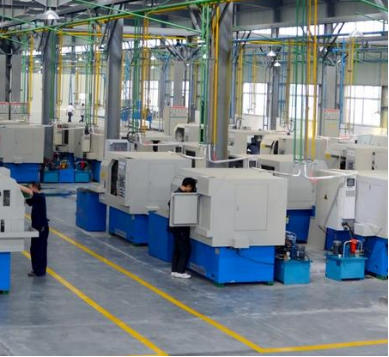
Corrosion resistance: Molybdenum disulfide powder is highly resistant to corrosion caused by various chemical substances. It can maintain its lubrication performance in harsh working environments and extend the service life of equipment.
Dispersibility and non-adhesion: Molybdenum disulfide powder has good dispersibility and non-adhesion and can be easily added to various oils and fats to form a non-adhesive colloidal state, improving the lubrication and extreme pressure properties of oils and fats.
Environmental friendliness: Molybdenum disulfide powder is non-toxic and harmless, environmentally friendly, and meets the requirements of modern industry for environmental protection.Advantages of using molybdenum disulfide powder in solid lubricants
About RBOSCHCO
RBOSCHCO is a trusted global chemical material supplier & manufacturer with over 12 years experience in providing super high-quality chemicals and Nanomaterials. The company export to many countries, such as USA, Canada, Europe,UAE,South,Africa,Tanzania,Kenya,Egypt,Nigeria,Cameroon,Uganda,Turkey,Mexico,Azerbaijan,Belgium,Cyprus,Czech Republic,Brazil,Chile, Argentina, Dubai, Japan, Korea, Vietnam, Thailand, Malaysia, Indonesia, Australia,Germany, France, Italy, Portugal etc. As a leading nanotechnology development manufacturer, RBOSCHCO dominates the market. Our professional work team provides perfect solutions to help improve the efficiency of various industries, create value, and easily cope with various challenges. If you are looking for Molybdenum Disulfide MoS2 Powder, please send an email to: sales1@rboschco.com
tags: Molybdenum Disulfide MoS2 Powder
Silicon carbide (SiC) is an important inorganic non-metallic material with high hardness, wear resistance, and high-temperature resistance, making it widely used in many fields. Silicon carbide can be divided into green silicon carbide and black silicon carbide based on color. The production method of green silicon carbide is the same as that of black SiC, but the requirements for raw materials are different. The crystalline form of green silicon carbide obtained through smelting has high purity and hardness.
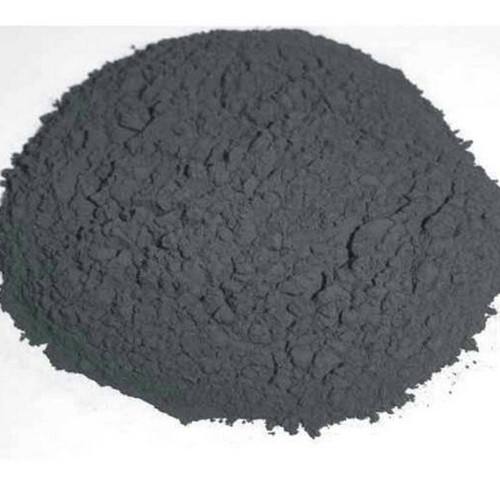
The production method of green silicon carbide
The production method of green silicon carbide mainly includes raw material preparation, crushing, batching, forming, sintering, etc.
Raw material preparation: The main raw materials for green silicon carbide are petroleum coke and quartz sand. Petroleum coke requires high fixed carbon content, low sulfur content, low ash content, and low volatile content, while quartz sand requires high SiO2 and low impurity content.
Crushing and batching: Crush and mix petroleum coke and quartz sand in proportion, and then feed the mixed raw materials into the molding machine through batching equipment.
Forming: In the molding machine, raw materials are pressed into green billets with a certain shape and size.
Sintering: Put the green body into a high-temperature furnace so that the carbon in the green body reacts with SiO2 in quartz sand to generate SiC, thereby obtaining green silicon carbide products.
The production method of black silicon carbide
The production method of black silicon carbide also includes steps such as raw material preparation, crushing, batching, forming, sintering, etc. However, its raw materials and process parameters are different compared to green silicon carbide.
Raw material preparation: the main raw materials of black silicon carbide are coal tar oil coke and quartz sand, of which coal tar oil coke requires high fixed carbon content, low sulfur content, low ash content, and moderate volatile content, while quartz sand requires the same requirements as green silicon carbide.
Crushing and batching: Coal tar, oil coke, and quartz sand are crushed and mixed in a certain proportion, and then the mixed raw materials are fed into the molding machine through batching equipment.
Forming: In the molding machine, raw materials are pressed into green billets with a certain shape and size.
Sintering: Put the green body into a high-temperature furnace so that the carbon in the green body reacts with SiO2 in quartz sand to generate SiC, thereby obtaining black silicon carbide products.
It should be noted that during the sintering process, black silicon carbide's sintering temperature is higher than green silicon carbide's, and longer insulation time is required to achieve higher density and performance.
About RBOSCHCO
RBOSCHCO is a trusted global chemical material supplier & manufacturer with over 12 years experience in providing super high-quality chemicals and Nanomaterials. The company export to many countries, such as USA, Canada, Europe, UAE, South Africa, Tanzania,Kenya,Egypt,Nigeria,Cameroon,Uganda,Turkey,Mexico,Azerbaijan,Belgium,Cyprus,Czech Republic, Brazil, Chile, Argentina, Dubai, Japan, Korea, Vietnam, Thailand, Malaysia, Indonesia, Australia,Germany, France, Italy, Portugal etc. As a leading nanotechnology development manufacturer, RBOSCHCO dominates the market. Our professional work team provides perfect solutions to help improve the efficiency of various industries, create value, and easily cope with various challenges. If you are looking for SiC powder, please send an email to: sales1@rboschco.com
Zinc stearate emulsion is a white or yellowish amorphous powder formed by the reaction of stearic acid and zinc salt, with good dispersion and stability. The lotion forms a colloidal dispersion system in an aqueous solution and has excellent lubricity, antistatic property, antirust property, thickening property, emulsification, etc.
Zinc stearate is a white powder insoluble in water and hot organic solvents such as ethanol, benzene, toluene, and turpentine. When encountering acid, it decomposes into stearic acid and corresponding salts. Under dry conditions, it has a fire hazard and a spontaneous ignition point of 900 ℃; Has hygroscopicity. The water-based lotion of zinc stearate is called water-based zinc stearate.
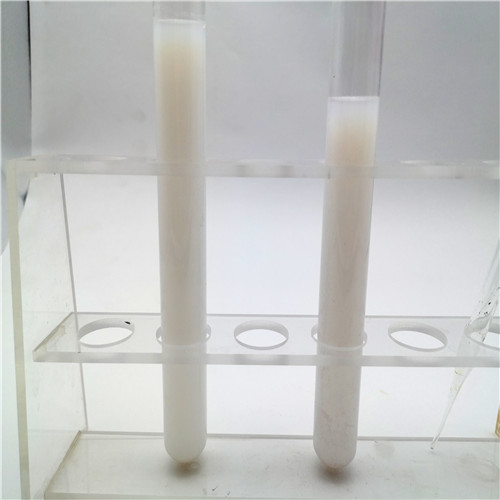
Application fields and roles of zinc stearate:
1. It mainly applies to water-based alkyd, water-soluble polyurethane, water-soluble acrylic acid, acrylic acid lotion and other systems. It is an excellent transparent putty filler, easy to polish, and has a sedimentation effect.
2. Waterborne coating: Used for high-quality water-based coatings, it has good transparency, fast defoaming, stability, good anti-sinking, fast drying, easy dispersion, easy abrasion, improves the hydrophobicity of the coating surface, and outstanding performance in improving the texture of the paint film.
3. Waterborne ink: It has a good economy, filling, stability, sinking, and waterproof properties and can be used as a leveling agent.
4. Textile products: it can be used as a polishing agent to improve surface hydrophobicity.
5. Makeup products: can be used as a lubricant to improve surface smoothness.
6. Paper industry: can be used as a waterproof and anti-adhesive agent, used for surface waterproof coatings on a specific paper, thermosensitive copperplate paper, self-adhesive paper, etc., with good lubrication and stability effects.
7. Sandpaper polishing: This can be used as a grinding aid to improve surface polishing, wear resistance, and waterproofing.
About RBOSCHCO
RBOSCHCO is a trusted global chemical material supplier & manufacturer with over 12 years experience in providing super high-quality chemicals and Nanomaterials. The company export to many countries, such as USA, Canada, Europe, UAE, South Africa, Tanzania,Kenya,Egypt,Nigeria,Cameroon,Uganda,Turkey,Mexico,Azerbaijan,Belgium,Cyprus,Czech Republic, Brazil, Chile, Argentina, Dubai, Japan, Korea, Vietnam, Thailand, Malaysia, Indonesia, Australia,Germany, France, Italy, Portugal etc. As a leading nanotechnology development manufacturer, RBOSCHCO dominates the market. Our professional work team provides perfect solutions to help improve the efficiency of various industries, create value, and easily cope with various challenges. If you are looking for Zinc Stearate Emulsion, please send an email to: sales1@rboschco.com
Tantalum carbide (TaC) is a compound material which has good physical and chemical properties, which has a wide ranges of applications in many fields.
1.The properties of tantalum carbide
Tantalum carbide is a compound with a high melting point, hardness, and good thermal and chemical stability. Its crystal structure is a face-centered cubic lattice, with each tantalum atom forming four covalent bonds with carbon atoms and each carbon atom forming three covalent bonds with three tantalum atoms, forming a stable crystal structure. The melting point of tantalum carbide is as high as 3880 ℃, and its hardness is second only to diamond and boron carbide. It has good wear resistance and corrosion resistance. In addition, tantalum carbide also has good thermal and chemical stability, which can work stably in high temperatures and strong corrosive environments.
2. Preparation method of tantalum carbide
There are various methods for preparing tantalum carbide; the most commonly used is the carbon thermal reduction method. This method involves mixing tantalum powder and carbon powder at high temperatures, heating them in an atmosphere, reducing them to high temperatures, and reacting the carbon powder with tantalum powder to generate tantalum carbide. Another commonly used method is chemical vapor deposition, which involves introducing tantalum and carbon-containing gases into a reactor at a certain temperature to generate tantalum carbide through a chemical reaction. In addition, there are also preparation methods such as arc melting and sputtering.
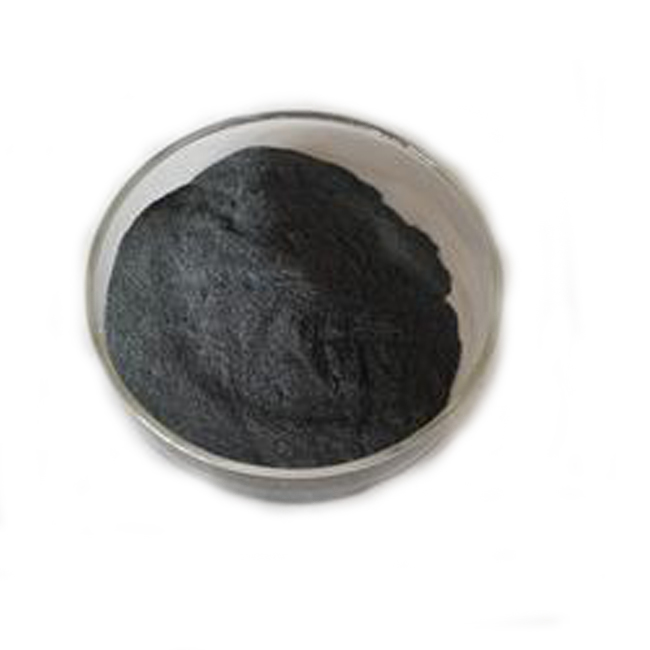
3. The application of tantalum carbide
As a high-performance material, Tantalum carbide has a wide range of applications in many fields. Firstly, TaC is mainly used in high-temperature resistant materials such as furnace tubes, crucibles, and ceramic cutting tools due to its high melting point and good thermal stability. Secondly, due to its high hardness and good wear resistance, tantalum carbide is applied in abrasives, grinding, and cutting tools. In addition, due to its excellent chemical stability and corrosion resistance, tantalum carbide is used in equipment and components in highly corrosive environments, such as chemical reactors, high-pressure vessels, and nuclear reactors.
About RBOSCHCO
RBOSCHCO is a trusted global chemical material supplier & manufacturer with over 12 years experience in providing super high-quality chemicals and Nanomaterials. The company export to many countries, such as USA, Canada, Europe, UAE, South Africa, Tanzania,Kenya,Egypt,Nigeria,Cameroon,Uganda,Turkey,Mexico,Azerbaijan,Belgium,Cyprus,Czech Republic, Brazil, Chile, Argentina, Dubai, Japan, Korea, Vietnam, Thailand, Malaysia, Indonesia, Australia,Germany, France, Italy, Portugal etc. As a leading nanotechnology development manufacturer, RBOSCHCO dominates the market. Our professional work team provides perfect solutions to help improve the efficiency of various industries, create value, and easily cope with various challenges. If you are looking for tantalum carbide powder, please send an email to: sales1@rboschco.com
This element has many applications, especially in ceramics, glass, electronics, and aerospace.
The chemical properties of scandium oxide
Scandium oxide is a white solid powder with high melting and boiling points. It is stable at room temperature and is not easily reactive with oxygen in the air. Regarding chemical properties, scandium oxide has strong oxidizing and acidic properties and can react with many elements and compounds. In addition, scandium oxide can also form various complexes, which play important roles in many chemical reactions.
Preparation method of scandium oxide
There are two main methods for preparing scandium oxide: the aluminum thermal reduction method and the carbon thermal reduction method. The aluminum thermal reduction method uses aluminum as a reducing agent, mixes scandium dioxide with aluminum powder, heats it to a high temperature, and reduces scandium dioxide to scandium oxide through the thermal reduction effect of aluminum. The C thermal reduction way uses carbon as a reducing agent, mix scandium oxide with carbon and heats it to high temperature. Through the thermal reduction effect of carbon, scandium dioxide is reduced to scandium oxide. Both methods can achieve high yields and purity.
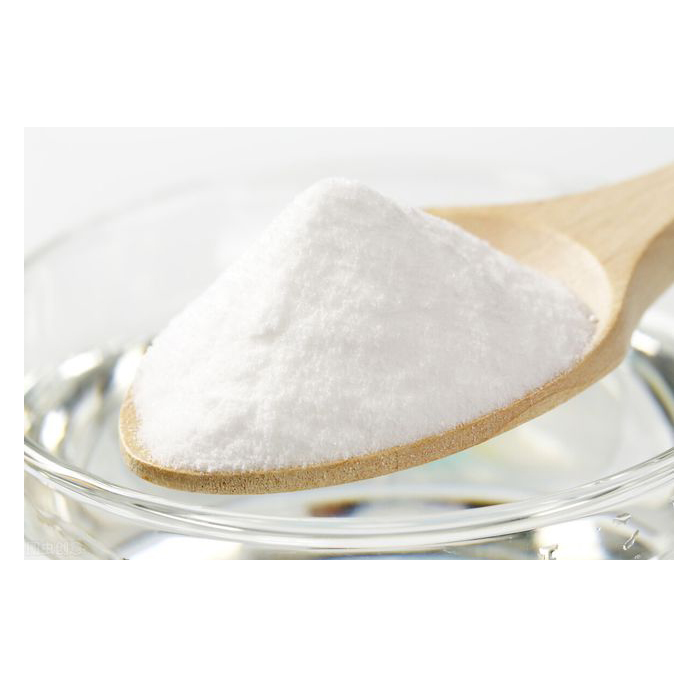
The application of scandium oxide
Scandium oxide has broad application value, mainly manifested in the following aspects:
Application in the field of ceramics: Scandium oxide used as prepare high-performance ceramic materials, such as high alumina ceramics containing scandium oxide and silicon nitride ceramics containing scandium oxide. These ceramic materials have excellent mechanical properties, chemical stability, and high-temperature performance and are widely used in aerospace, energy, and chemical engineering fields.
Used in the glass field: These glasses have excellent optical and fluorescence properties and are widely used in optical instruments, displays, lighting and other fields.
Electronic materials: Scandium oxide is widely used in preparing electronic materials due to its excellent electrical properties. It can be an insulation layer for electronic devices, improving their insulation performance and stability. In addition, scandium oxide can also be used to prepare electronic ceramic materials, such as capacitors and sensors, to improve their performance and stability.
Laser and TV electron gun: Scandium oxide can also be used to manufacture variable wavelength solid-state lasers and TV electron guns.
About RBOSCHCO
RBOSCHCO is a trusted global chemical material supplier & manufacturer with over 12 years experience in providing super high-quality chemicals and Nanomaterials. The company export to many countries, such as USA, Canada, Europe, UAE, South Africa, Tanzania,Kenya,Egypt,Nigeria,Cameroon,Uganda,Turkey,Mexico,Azerbaijan,Belgium,Cyprus,Czech Republic, Brazil, Chile, Argentina, Dubai, Japan, Korea, Vietnam, Thailand, Malaysia, Indonesia, Australia,Germany, France, Italy, Portugal etc. As a leading nanotechnology development manufacturer, RBOSCHCO dominates the market. Our professional work team provides perfect solutions to help improve the efficiency of various industries, create value, and easily cope with various challenges. If you are looking for Sc2O3 powder, please send an email to: sales1@rboschco.com




